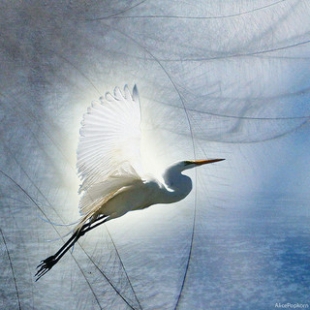
Making Furikake with Alessandro Scarlatti
by Ruth Weinstein
I dally with the music of my beloved mournful Dowland,
But he would use all the salt in the rising oceans to
float the sad vessel of his sounds, and I need a scant
(ever mindful of balancing blood pressure and
umami) teaspoon of Celtic grey sea salt for the mix.
I settle instead on Alessandro Scarlatti, famed
for thematic development and chromatic harmony,
both essential but unlisted ingredients of homemade furikake.
I put more sheets of nori than I need in the food dehydrator,
dial to the highest setting and let the layers, puce and vitreous
as biotite, crisp, adding more heat to our empty, vented
greenhouse but little to the kitchen where I quickly toast
white and black sesame seeds, bonito flakes and wakame
in an enameled cast-iron skillet. The compatible colors glow,
amber-warm as a mica-shaded Arts and Crafts lamp.
As the seeds, fish flakes and seaweed cool, a faint aroma
of littoral stretches wafts through my land-locked Ozark kitchen,
then floods me with a crashing wave of scent as I grind
the components. I add a teaspoon of Korean gochugaru
and the minerally sea salt at the end, then shake the jar so hard
that the world’s flavors dance together for a brief moment
in Baroque elegance, a ready crescendo over sliced tomato
and mayonnaise on your warm, wholegrain, sourdough pitas.
Together we have made a lunch to please a Zendo of monks and
the Italian composer of Baroque opera, Alessandro Scarlatti:
a globe-spanning sandwich—balanced, colorful, harmonious,
filled with mysterious reminiscence of our old geographies.
PHOTO: Japanese furikake seasoning by Bhofack2.

NOTE FROM THE AUTHOR: Recently I read a recipe in the New York Times cooking section for Eric Kim’s tomato sandwich with furikake, a Japanese seasoning I used regularly when I lived in Japan. I don’t buy it because most brands contain MSG, so I decided to make it. It’s an easy but time-consuming process, and I wanted the right music. The process turned out to be sensual, abstract, and an impetus to learn something new. I’ve been using my homemade furikake on tomato sandwiches, rice and veggies, eggs, salads and just about everything savory this summer and plan to make enough to give as gifts.
PHOTO: Ruth Weinstein’s Margherita pizza with arugula, homegrown tomatoes, and homemade furikake. Photo by the author.

ABOUT THE AUTHOR: Ruth Weinstein is an octogenarian organic gardener, writer, and textile artist living in the Arkansas Ozarks. In 2020, Stockton University Press published her family history/memoir, Back to the Land: Alliance Colony to the Ozarks in Four Generations, in which she connects her mother’s family’s role in helping to establish America’s first successful Jewish agricultural community in South Jersey in 1882 with her own back-to-the-land story. You can message her on Facebook to purchase the book. Her poetry has appeared in various print and online journals. Her poem “Legendary Tomatoes of New Jersey” was third-place winner in Poetica Press’ 2022 Miriam Racimi Micro Chapbook Competition. In September, Back Room Poetry in England will publish a hand-crafted, limited edition of her chapbook, The Francine Chronicles. She’s too busy to build a website, but maybe soon; she expects to be long-lived and active till the end.















